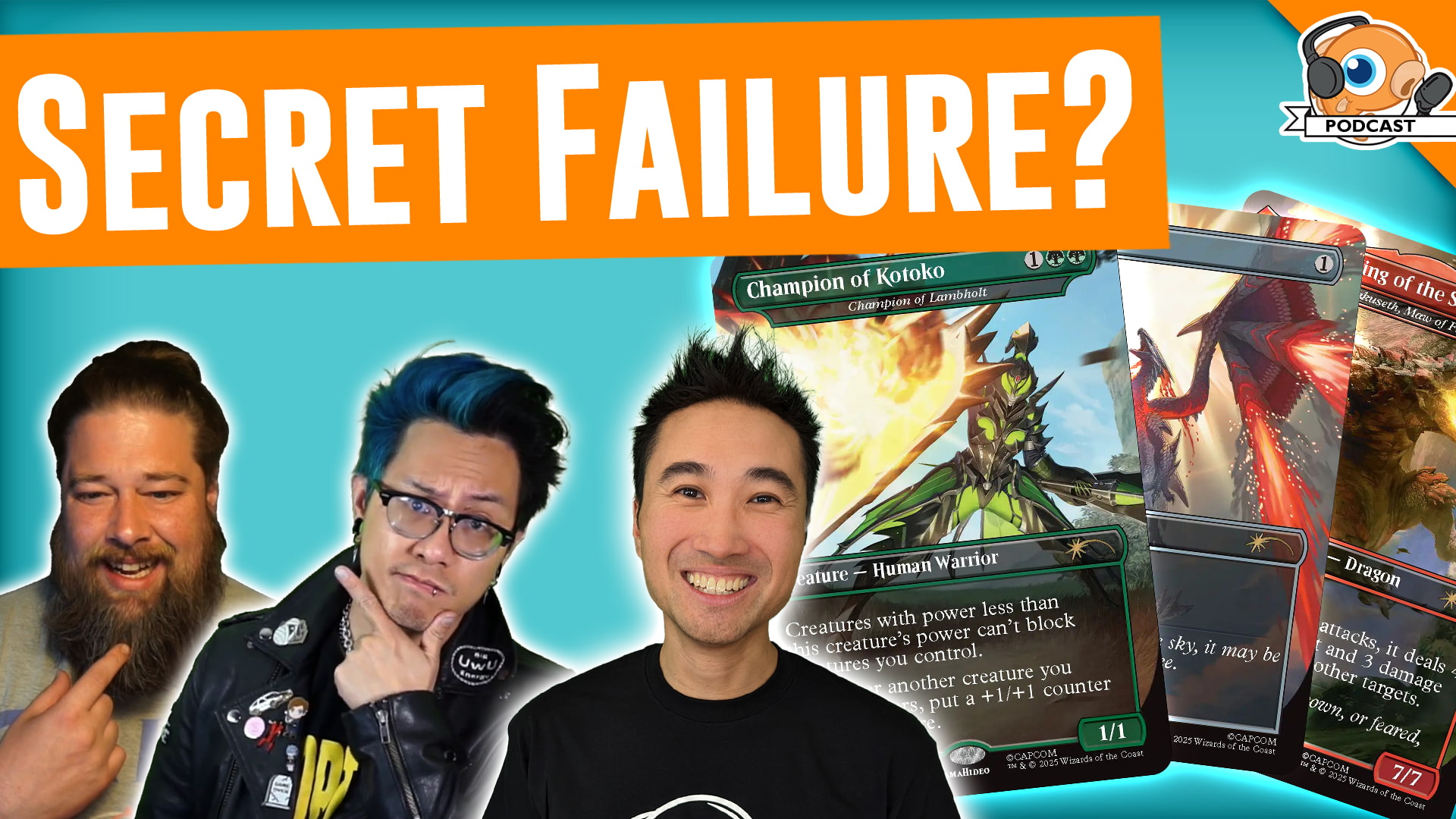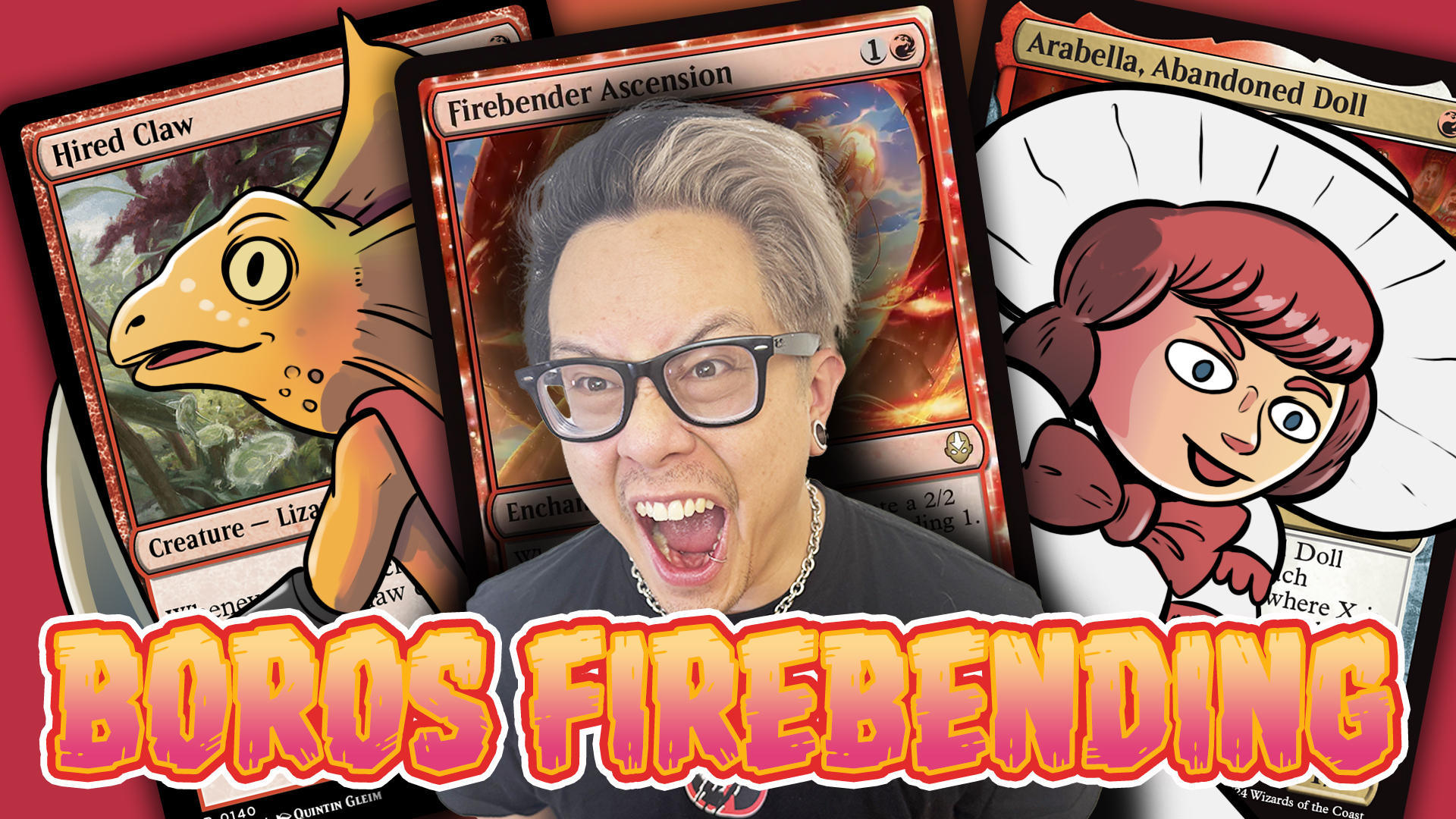Preparing for Eternal Masters: Five Budget(ish) Options for Legacy
As you probably know Eternal Masters spoilers start on Monday, which means that for the new month, the Magic community will be focused on older formats. This mindset comes on the heels of the announcement of the new Legacy Festival on Magic Online, with first place netting between $3,000 and $3,500. Discounting the Magic Online Championship, it is likely the biggest first place prize for any event held in the past several years. Altogether, there are some very real incentives for buying a Legacy deck right now, both in paper and on Magic Online. Not only does Eternal Masters mean a window for picking up some staples like Force of Will and Wasteland at a discount, on Magic Online there's likely to be a meaningful uptick in Legacy play over the next couple of months.
One thing I've gotten a lot of requests for, but never figured out, is Legacy Budget Magic. In a format where decks regularly cost $2,000 or $3,000, making a competitive deck for $100 is unrealistic. Making matters worse, there are a ton of important and playable cards that really don't have substitutes. In formats like Modern and Standard, the difference between Sylvan Advocate or Tarmogoyf and their best budget alternative is meaningful, but not always a deal breaker. In Legacy, there really isn't a substitute for a card like Force of Will or Wasteland. In talking about budget Legacy, our frame of reference needs to be different. When you compare the cost of a deck to the average cost of a deck in a format, a $100 Standard deck is similar to a $500 Legacy deck. So don't expect a "you can win the Legacy Festival for only $20" type deck. Those decks just don't exist. That said, let's talk about five budget(ish) options for Legacy!
Unfair Decks

Everyone knows the most expensive part of building a Legacy deck is the manabase, often featuring the original dual lands and Zendikar fetchlands. Well, Manaless Dredge gets around this problem. Not only does it avoid playing expensive dual land and fetches, it doesn't play any lands. The basic idea of the deck is to get a creature with the dredge mechanic in your graveyard on turn one by discarding to handsize, which is why you always choose to be on the draw and basically never mulligan. Then every turn you dredge cards into your graveyard.



As you dredge, you get a bunch of odd value. Any Narcomoebas you dredge go onto the battlefield. You can use them to flashback copies of Cabal Therapy to pick apart your opponent's hand. Nether Shadow comes back from the graveyard every turn, letting you get in some free damage while also working well with Cabal Therapy. Bridge from Below allows you to make a huge army of Zombies when you sacrifice your creatures.



If creating an endless stream of 2/2 Zombie tokens from Bridge from Below isn't enough to win the game, eventually you dredge your entire library, target a Flayer of the Hatebound and Golgari Grave-Troll with a Dread Return and burn your opponent out with direct damage!
The Good News: The nice thing about Manaless Dredge is it's by far the cheapest deck that can reliably win you a Legacy tournament. It does have Top 8 finishes in major events. The play style also appeals to people who dislike the actual game of Magic and would rather goldfish and hope their opponent doesn't play a Rest in Peace. Personally I think that Dredge is a unique experience and something that everyone should try once, but I couldn't imagine making it my primary Legacy deck. That said, if you are looking for a super-cheap deck to bring to play in the Legacy Festival, you could do worse than Manaless Dredge.
The Bad News: There are two things I really dislike about Manaless Dredge. First, it's hard to be consistently successful with the deck. If no one is playing graveyard hate, it can be the best deck in an entire tournament. On the other hand, once Dredge wins a tournament, everyone starts packing graveyard hate, and it will be impossible to win for a few weeks. Being Manaless makes this problem even worse. While versions of Dredge with lands still have a difficult time beating Rest in Peace or Leyline of the Void, the manaless version is dead to those cards. Seriously, if your opponent goes turn zero Leyline of the Void, you scoop up your cards and move on to game three, crossing your fingers that they don't mulligan into another Leyline of the Void. While Manaless Dredge can be a great deck to spike a tournament, it's a hard deck to play week-in week-out because there are a ton of really powerful hate cards that Manaless Dredge simply can't answer.
The second problem is more on the upgrade front. Since dredge is such a unique archetype, apart from Cabal Therapy, not a single card in the deck regularly sees play in another deck. So while you can buy into Manaless Dredge cheaply, that investment is only good for playing dredge.

Maybe the best thing Wizards could do for a budget Legacy player in Eternal Masters is reprint Goblin Guide and Chain Lightning, which together make up half the price of a fully powered Burn list. The archetype itself is fairly strong, certainly powerful enough to Top 8 an event. While there are some pretty strong hate cards like Leyline of Sanctity and Chill available in the format, Burn doesn't scoop to common hate in the same way Manaless Dredge does. As a result, it's definitely possible to make Burn your primary Legacy deck and be successful.



The basic idea of Burn is to throw burn spells at your opponent's face over and over and over again until they die. Considering the card pool available in Legacy, almost every spell in the deck represents at least three damage for only one mana. With things like opponent's fetch land activations, you generally need to resolve six spell to win the game. While this method may sound simple, playing a Burn deck optimally is one of the hardest things in Magic, which is one of the reasons why Burn is such a good starter deck. Pretty much anyone with the ability to count to 20 can play a Burn reasonably, but the deck gives you a lot of room to improve and grow as a player as you gain experience.

Fully powered versions of Burn look pretty much like the starter list I posted above, with a couple key additions. First, you get access to Goblin Guide, which is perhaps the best Burn card ever printed. On turn one, it often represents at least four-, and sometimes six-damage for only one-mana, while also offering a way for the deck to win through Leyline of Sanctity. Chain Lightning is another extremely efficient Burn spell, making it a much better maindeck option than Exquisite Firecraft, which is more suited as a sideboard card for counterspell heavy matchups. Finally, the deck gets access to fetch lands, even though it's only interested in fetching for Mountains. While the theory on deck thinning is hotly debated, in a deck like Burn, the difference between drawing one extra spell over the course of a match is often the difference between a win and a loss. Fetch lands also synergize with Grim Lavamancer and Searing Blaze. This said never, ever buy Zendikar fetches for a Mono-Red Burn deck. In a deck where the only fetchable land is basic Mountain, the difference between Wooded Foothills and Scalding Tarn is $300.
One hot tip for Magic Online players. You can buy a preconstructed deck called Boltslinger in the Magic Online Store for $30. The deck contains four copies of Goblin Guide (retail price 5.40 tix each), four copies of Pyroblast (retail price 5.58 tix each), four Relic of Progenitus (0.70 tix each), four Lightning Bolts (0.65 tix each) and a bunch of other playable, but not expensive burn spells. If you are just starting off on Magic Online and don't have any of these cards in your collection, this is likely the cheapest way to acquire a Legacy burn deck.
The Good News: Burn is both cheap and powerful. You can start off with an ultra-budget starter list, have some amount of success, and then upgrade over time. The deck is very easy to pick up and play, which makes it a good option for players new to a very complex format.
The Bad News: Goblin Guide and Chain Lightning make up a large percentage of the deck's cost, and both cards are likely to be reprinted at some point, possibly even in Eternal Masters. As such, you stand to lose out on your investment when these reprints happen. The deck is fairly linear so it may get old over time. If you can, take it for a test run to see if you like playing Burn. Some people love it and will playing nothing else forever, other people can't stand it and would rather be locked out under Blood Moon.

Let's talk for a minute about the manabase in Legacy. The gold standard is the original dual lands from Alpha, Beta, and Unlimited. These lands are the best ever printed and staples of the Legacy format. On the other hand, the shock lands from Ravnica are extremely similar to the original duals. Actually, they are exactly the same, but they require you to lose a bit of life here and there. An extremely important question to budget Legacy players is how much does the downgrade from the original duals to shocks hurt?
The answer is it really depends on the deck. Taking an extra two damage throughout the game adds up. If you played 100 matches with shocks and 100 matches with original duals, I have no doubt you'd lose more often with shocks. That said, it matters less to some decks than others. Take for example, the Reanimator list posted above. The original deck was running Badlands in the Blood Crypt slot. At the same time, there's a total of four "duals" in the deck, so at most, switching to Blood Crypt could cost you eight extra life points a game, which is a ton. However, the deck has exactly one Red card that it plans on casting in Faithless Looting, so you will rarely need more than one copy of Blood Crypt on the battlefield. Plus, in some games you'll be able to fetch it tapped, or you'll never draw a Faithless Looting and just win on turn one by casting Dark Ritual into Entomb for Griselbrand and a reanimation spell. So in reality, the change from duals to shocks is relatively minor for this build.
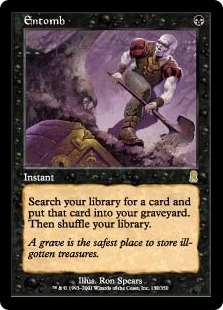


The basic idea of Reanimator in Legacy is to resolve one huge threat as early as possible, preferable on turn one. Most of the time this will be either a Griselbrand or a Sire of Insanity. Griselbrand allows you to draw 14 cards, which should find you a combination of mana from Lotus Petal and Dark Ritual and discard spells like Unmask and Duress. You can then use these card to get rid of any answers your opponent may have in hand, and win by attacking with Griselbrand. Sire of Insanity comes with a built in Mind Twist, which triggers on your end step eliminating your opponent's hand entirely, and makes answering the 6/4 almost impossible. As you can see, when things are going well, the difference between taking two life from a Blood Crypt and getting a Badlands for free is nonexistent.
The Good News: If you like playing big creatures fast, Reanimator is the perfect Legacy deck to get started on. Its good draws are very close to unbeatable. Also, Griselbrand and Iona, Shield of Emeria are somewhat playable in other decks and formats, so while many of the cards are only used in Reanimator, some of the expensive pieces have additional uses and can help you build towards other decks and formats.
The Bad News: Reanimator has some of the same problems as Dredge in that it can be disrupted by graveyard hate, although it isn't just drawing dead to Rest in Peace. It's also fairly repetitive. Most of the games will play out the same way, so if you like long, interactive games of Magic, you might want to pass on Reanimator.

Let's start by talking about the two changes I made to make the 12th place deck from SCG Milwaukee budget friendly. First, the one dual land in the deck became a Stomping Ground instead of a Taiga, which shouldn't really matter much since you only have one land anyway. Second, the single copy of Lion's Eye Diamond became another Chrome Mox, saving $120 in the process. That said, Lion's Eye Diamond and Taiga are both on the Reserved List, so if you're thinking of becoming a Belcher player, you might as well pick up a copy of each because they won't be reprinted any time soon.
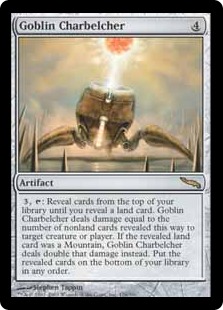


Belcher is a storm deck, which can win by making a ton of 1/1 Goblin tokens with Empty the Warrens, or by activating Goblin Charbelcher to one-shot your opponent's life total as early as turn one. The unique thing about Belcher is that it only plays a single land, which helps make sure that Goblin Charbelcher is lethal when you activate it. Mana is generated almost entirely from rituals and creatures like Simian Spirit Guide, Elvish Spirit Guide, and Tinder Wall. The other thing to note about Belcher is that unlike Black storm decks, you don't have any disruption, which means the right play is to go for the kill as early as possible. Every turn you wait is another turn where your opponent can draw a Thoughtseize or Force of Will to ruin your plans. If they do have these cards, you probably just One with Nothing'd yourself. If they don't, you win!
The Good News: Belcher is really, really good at doing its thing, and its thing is powerful enough to win almost any game. The expensive cards in the deck are on the Reserved List, so if you buy the fully powered version with Lion's Eye Diamond and Taiga, you don't have to worry about losing a ton of value when key cards get reprinted.
The Bad News: Belcher only really does one thing: cast a bunch of rituals and hope for the best. It loses to Force of Will, which is currently played in 63% of Legacy decks. You get even less interaction than other Storm decks since you don't have Black for Duress and Thoughtseize. Games are going to be fast, and you are either going to win by a mile or lose completely.
The Fair Deck Problem

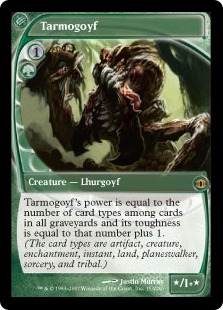

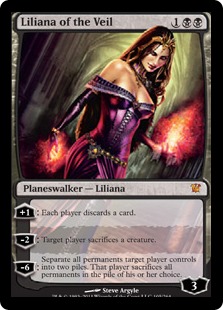
Did you pick up on the theme of the decks we've been talking about? While they all play out differently and use a lot of distinct cards, they are all essentially unfair decks that are looking to kill the opponent in the first few turns of the game. Legacy has this weird dynamic where unfair decks are sometimes cheap (by Legacy standards), while fair decks are almost always expensive, since they all need to play Force of Will to have a chance of surviving the first two turns. The fair deck price problem isn't on Force of Will alone. The other part of the problem is that the power level of Legacy is so high that substitutions are more detrimental than in other formats.
If you want to get into Legacy cheaply, you are forced into buying an all-in combo deck, and while all-in combo decks are fun, they tend to get repetitive. So what if you fall into the camp of wanting to play Legacy on a budget, but not wanting to put out $3,000 or play an unfair, all-in combo deck? Unfortunately the pickings are extremely slim. After spending hours digging through lists, I did come up with one semi-fair option that can be built on a reasonable budget without ruining the overall feel of the deck.

While I had to take some liberties, Nic Fit has some natural advantages as far as budget is concerned. Nic Fit plays a lot of basic lands thanks to the Veteran Explorer/Cabal Therapy package. Essentially, Nic Fit is a ramp deck that uses Veteran Explorer to power out expensive, powerful threats like Sigarda, Host of Herons, Siege Rhino, and Sorin, Grim Nemesis. If you were an Abzan player in Standard, this list is the right Legacy starter option for you.
The Good News: Nic Fit is a non-combo deck that is relatively inexpensive. It plays a unique and fun game for Legacy, featuring a bunch of expensive creatures that don't often see play in the format.
The Bad News: Most of the cards are unplayable outside of Nic Fit (Cabal Therapy is an exception), which makes it hard for the investment to be upgraded or transferred to other decks. Also, Nic Fit is sort of on the fringe of Legacy and hasn't had a lot of tournament success recently.
Wrap Up
Building competitive Legacy on a budget is challenging. It simply isn't possible to build $100 decks that have a reasonable chance of experiencing tournament success like we do in Standard and Modern. Hopefully these decks will at least give a starting point for someone new to the format. The rule of thumb for selecting a budget Legacy deck is pretty simple: avoid Wasteland decks and Force of Will decks. While this rule may change with the release of Eternal Masters, I wouldn't expect the slight increase in supply to do too much in the paper world, although it might help Magic Online.
Speaking of Magic Online, the program offers a cheaper way to play the format. While digital Legacy isn't truly cheap, it's far less expensive than the paper world, mostly because the Reserved List doesn't exist online; dual lands are between $3 and $20 instead of $80 and $300. The other benefits of online Legacy is it's much easier to switch decks since selling a deck is easy and the spreads are much lower than in paper. Plus, it's much easier to find a match of Legacy online than it is in the paper world.
Conclusion
Anyway, that's all for today. Do you have any other budget options for Legacy that could be helpful for new players getting into the format? Let me know in the comments! How much does downgrading from duals to shocks hurt a deck? As always, leave your thoughts, ideas, opinions and suggestions in the comments, and you can reach me on Twitter @SaffronOlive, and at SaffronOlive@MTGGoldfish.com.


